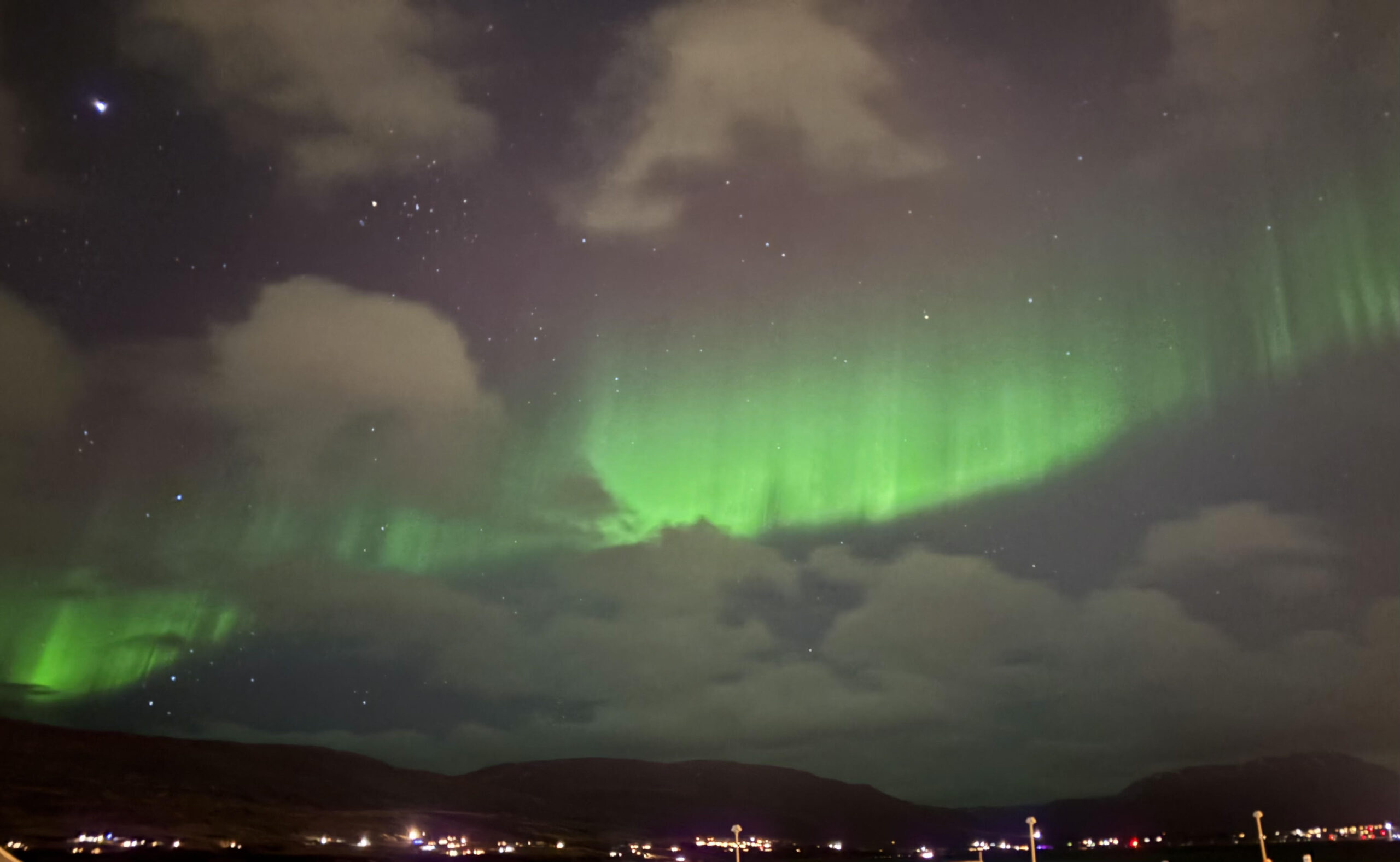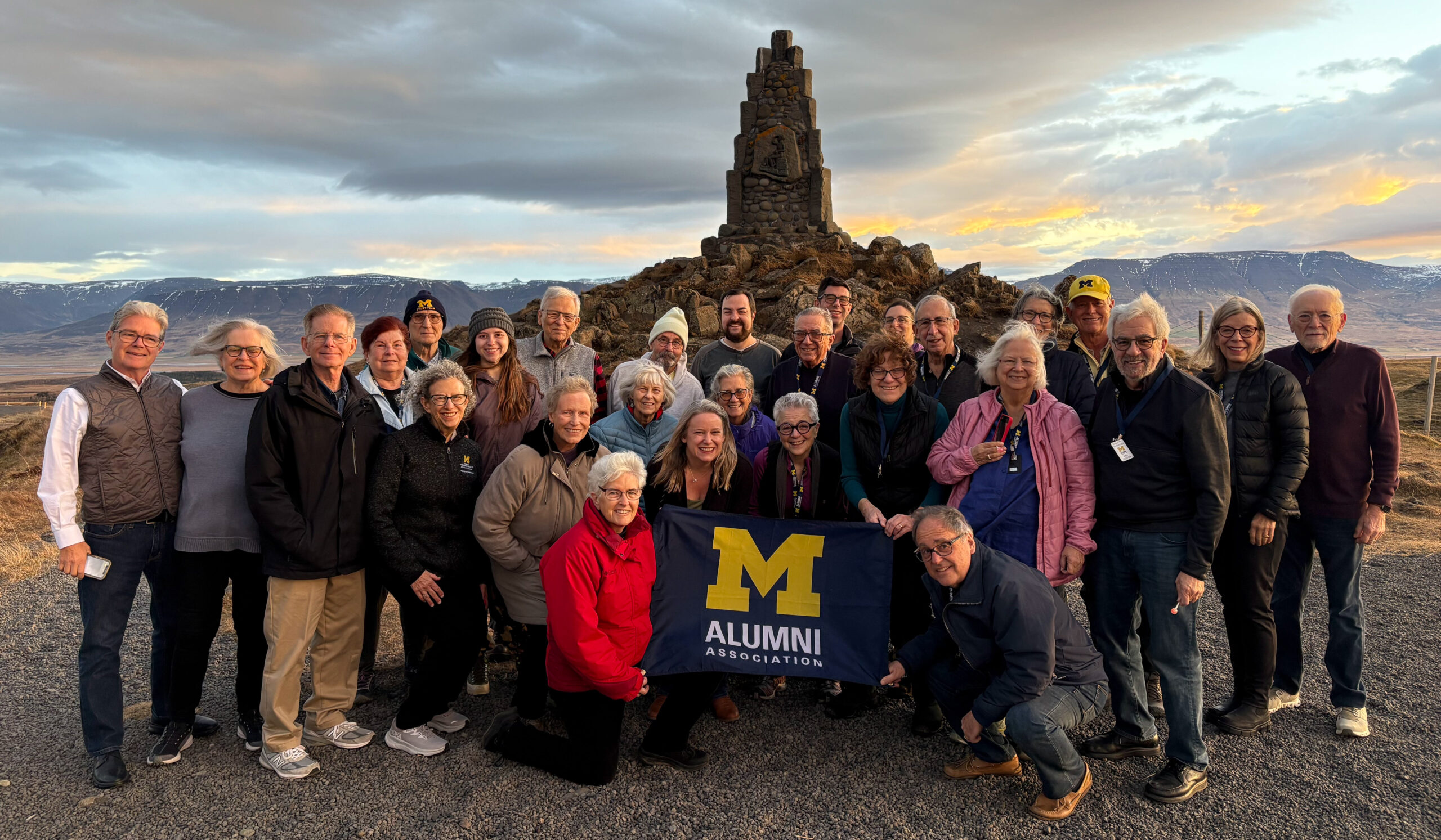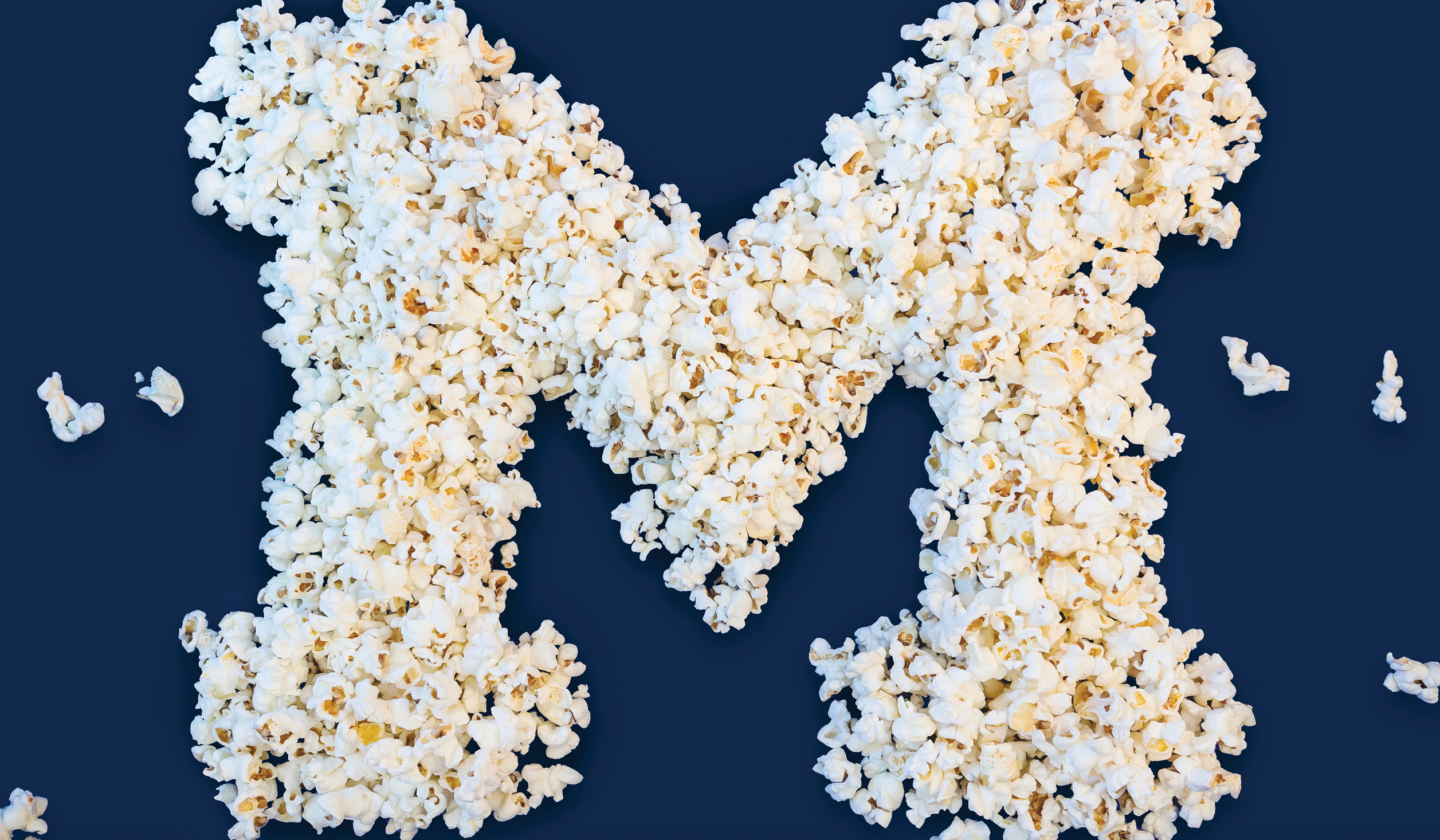Judith Marks, MA’82, was beginning to think she wasn’t going to see the northern lights in Iceland. She was there on a Michigan Alumni Travel trip, hunting for a spectacular sky show, but the weather wasn’t cooperating.
With just a few days left, the group decided to return to their hotel after an evening excursion that didn’t produce the results everyone wanted. Marks and other U-M alums stepped outside the van to retire for the evening when the sky exploded with green.
“I looked up, and I’m like, ‘Oh my gosh,’” Marks remembers. She snapped pictures and stayed out to watch the show, which was visible to the naked eye.
“The ideal condition is to go to the darkest place possible to be away from bright lights, but we were in the brightest part,” Marks says about being in the middle of a town. “The aurora was just so strong, it didn’t matter.”
The northern lights, or aurora borealis, have been of interest to Marks for several years. Marks started following the Michigan Aurora Chasers on Facebook, and began to learn tips and tricks from the group on how to find and photograph the aurora.
Melissa Priebe, the founder of the Michigan Aurora Chasers, was also the host for the trip to Iceland. Priebe, who writes under the name Melissa F. Kaelin, has been chasing aurora for more than a decade and has generated a massive community on social media — more than 110,000 people are part of her aurora chasers Facebook group. She has a U-M connection too, working as the manager of marketing and communications for U-M’s department of climate and space sciences and engineering.
Last year was particularly active for aurora, with two major events sending greens and pinks across the skies in the United States. Priebe says that activity is expected to continue.
“A panel of scientists just agreed that we have hit the 11-year solar maximum,” she says. “All this activity starts on the surface of the sun … and there’s an 11-year cycle when it goes from minimal activity to peak activity. We are just at the beginning of the peak, so for the next year, possibly two, we’re going to be seeing more aurora when we have clear skies.”
Priebe, who has written a guide to aurora hunting and cofounded an annual conference on it, says social media and the advancements with cell phone cameras have really changed the game in spotting aurora.
“Our phone cameras can capture so much. We can catch this thing before our eyes even know what’s happening,” Priebe says. “You can take a photo and post it online. Now everyone sees it, everyone goes outside. So we’re seeing it more often than we ever thought possible.”
Marks, who was on her first trip with the Alumni Association, says that along with the aurora, the sights in Iceland were great and they got to meet with locals, including spending time on a farm in a very rural part of the country where they were served local food.
The Iceland trip was also led by company tour guides to assist with night excursions. “People learned a lot and even at the end of the trip, the tour guide said this was really a special group because of all the energy and bonding we did,” Priebe says.

Six Tips for Chasing Aurora
- Find the darkest skies near you using light pollution maps.
- Patience is key. You need to be watching for about three hours.
- Find a safe location. Scout in the daylight so you know of any potential hazards in the dead of night.
- Learn everything you can. Read websites and social media groups.
- Pointing north, take test shots with your phone. Aurora will show in photos before the naked eye.
- Plan one other exciting thing to do while hunting so you won’t go home empty-handed.
Jeremy Carroll is the senior content strategist for the Alumni Association of the University of Michigan.





